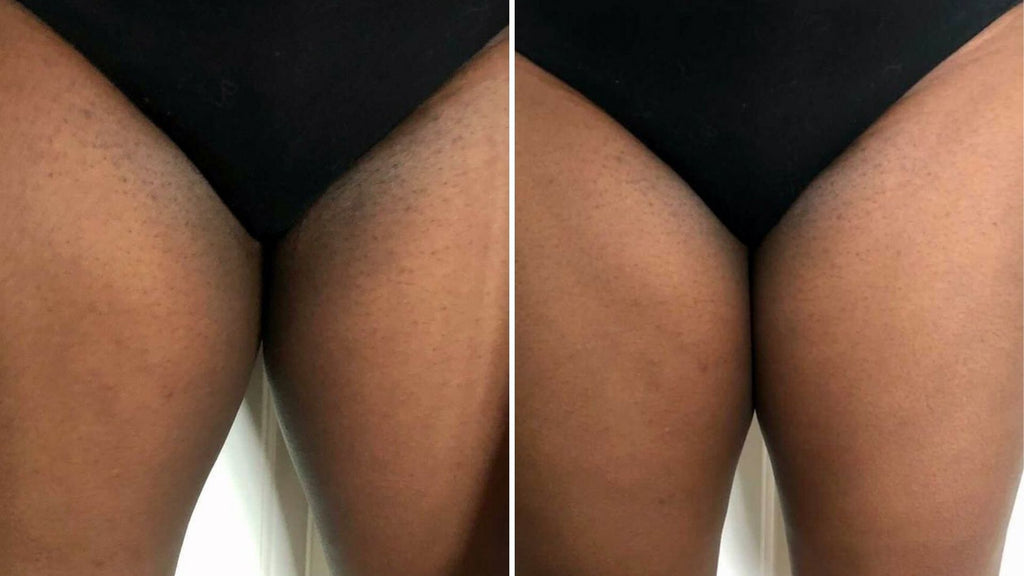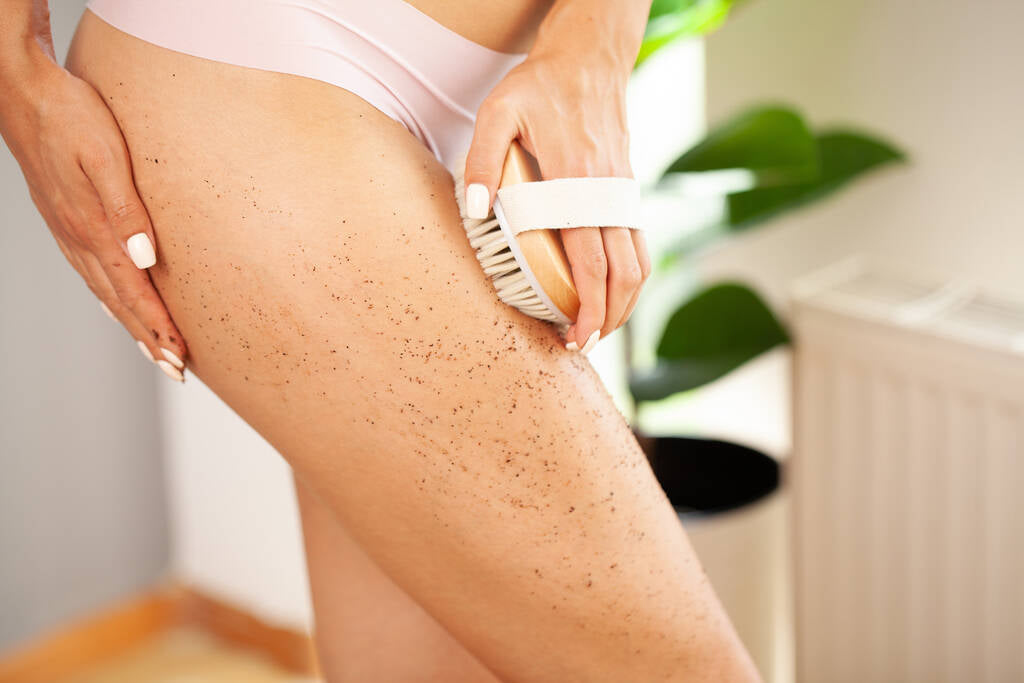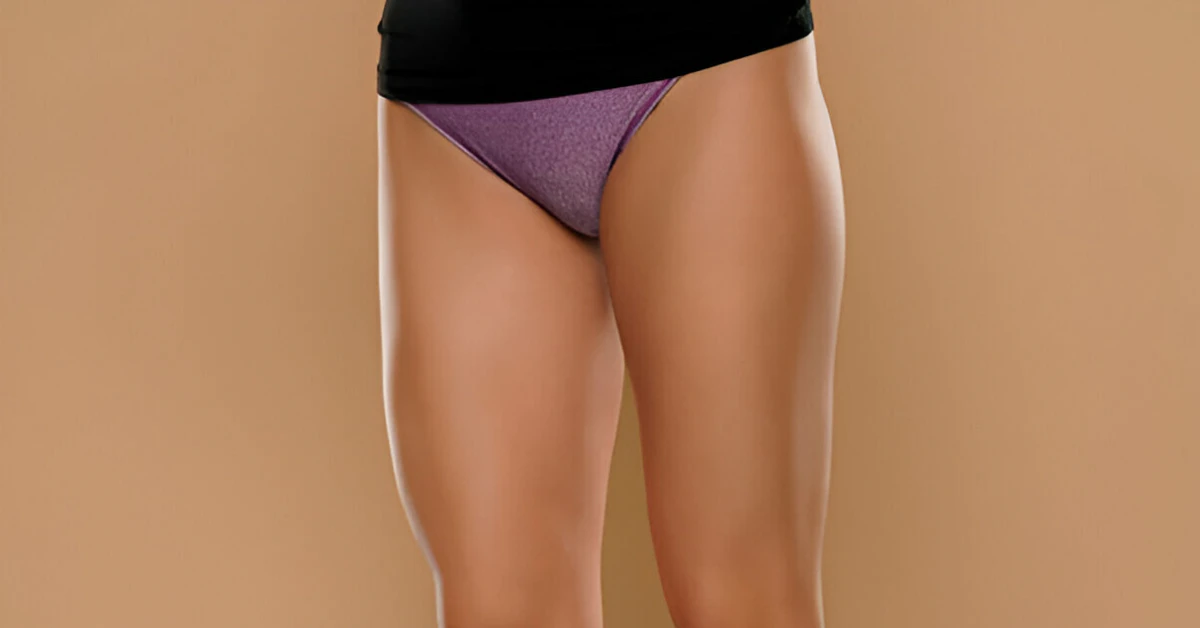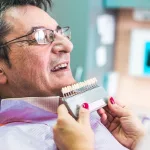You know that thing where you look in the mirror and notice your inner thighs are darker than the rest of your skin?
Yeah. Me too.
It’s not rare. Not weird. And definitely not something to feel embarrassed about.
I remember the first time I really paid attention to mine — it was after a beach trip, wearing a swimsuit, and I thought, Wait… is that supposed to be like that? Spoiler: totally normal. But also, something a lot of us quietly worry about.
So let’s talk about it — no fluff, no shame, just real talk.
Dark inner thighs? They happen. And more than you think, especially if your skin rubs together, you’ve got hormonal shifts going on, or you’re just… alive and human.
Let’s unpack what’s really going on — and how to care for it safely.
What Causes It?

Okay, first — what does “dark inner thighs” even mean?
Medically? It’s called hyperpigmentation — when your skin produces extra melanin (the stuff that gives skin its color) in response to irritation, hormones, or friction.
But in real life? It’s usually not a medical emergency. It’s your skin saying, “Hey, something’s been bothering me here.”
And the triggers? Super common:
Friction and Chafing
If your thighs tend to rub together when you walk, run, or just move around — you’re not alone.
That constant rubbing? It causes micro-injuries. Tiny. Unnoticeable. But over time, your skin reacts by darkening — a process called post-inflammatory hyperpigmentation (PIH).
Tight jeans, sweaty workouts, even sitting cross-legged all day — sound familiar?
According to Dr. Alpana Mohta, MD, a board-certified dermatologist, this kind of friction is one of the top causes of dark inner thighs.
And no, it doesn’t mean you need to stop moving — it just means your skin could use a little extra TLC.
Hormonal Imbalances (Like PCOS)
Here’s one a lot of women don’t connect: PCOS and dark inner thighs.
Polycystic ovary syndrome isn’t just about periods or acne. It’s often linked to insulin resistance — and that can show up as acanthosis nigricans.
That’s a mouthful, but basically? It’s thickened, velvety, dark patches — usually in folds like the neck, armpits, and yes, inner thighs.
If you’ve got PCOS and see this kind of discoloration, don’t ignore it. It might be a sign your body needs deeper metabolic support.
Hormonal birth control can also trigger pigmentation — as can pregnancy, menopause, or even stress. Your skin talks, and sometimes it’s shouting about what’s happening inside.
Other Surprise Causes
Jock itch (fungal infection), dry skin, or even too much sun exposure under thin clothing? All can contribute.
And shaving? Yeah, it counts. Tiny nicks, ingrown hairs, irritation — each one can spark a little inflammation → melanin surge → dark spot.
Even medications like certain antibiotics or antipsychotics have been known to affect skin tone. If your darkening started suddenly, it’s worth chatting with your doctor.
Can You Lighten Them?
“How to get rid of dark inner thighs and private area” is everywhere online. But here’s the real tea —
There’s no magic potion. No overnight fix. And no, you’re not going to lighten dark inner thighs in a week — no matter what that TikTok trend says.
Real skin change? It takes time. Like, weeks. Sometimes months.
But that doesn’t mean you can’t make progress. You absolutely can — safely, gently, and effectively.
Home Remedies: Do They Work?
Let’s be honest — most of us start here. A quick Google, a few kitchen ingredients, and boom — DIY face… uh, thigh mask?
Some actually help. Others? Not so much.
Coconut oil and lemon juice? Popular combo. Coconut oil hydrates (great for friction-prone skin). Lemon juice has vitamin C, which can help fade pigment.
But — and this is a big but — lemon juice is highly acidic. On sensitive skin? It can cause irritation. And irritated skin makes hyperpigmentation worse.
A 2013 study suggests that vitamin C formulations do help with hyperpigmentation — but lemon juice alone isn’t consistent or safe for daily use according to research.
Sugar scrub? Gentle exfoliation can help remove dead skin. Mix with honey and a little yogurt — it’s soothing, slightly brightening, and way safer than harsh scrubs.
Oatmeal and aloe vera? Yes, please. Oatmeal calms inflammation. Aloe soothes. Both are skin-friendly and low-risk.
Baking soda? Hard pass. Too abrasive for delicate skin. Can strip natural oils → more irritation → more darkening.
Bottom line: natural doesn’t always mean safe. Go gentle. Patch test. And if it stings? Stop.
Dark Inner Thighs Cream: What Actually Works?
If you’re ready to step up your game, over-the-counter dark inner thighs cream products can help — if you pick the right ingredients.
Here’s a quick breakdown of what’s proven to work:
| Ingredient | What It Does | Best For |
|---|---|---|
| Kojic Acid | Blocks melanin production | Mild to moderate darkening |
| Arbutin | Natural alternative to hydroquinone | Sensitive or reactive skin |
| Azelaic Acid | Reduces pigment + calms redness | Acne-prone or inflamed skin |
| Retinoids | Speeds up cell turnover | Long-term tone improvement |
| Vitamin C | Fades pigment + antioxidant boost | All skin types (non-irritating forms) |
Look for products that are fragrance-free and labeled for sensitive areas. And always — I mean always — patch test on a small area first.
When to See a Pro: Medical Treatments
If OTC creams aren’t cutting it? It might be time for professional dark inner thighs treatment.
Hydroquinone is one of the strongest options — but it’s not for casual use.
Used too long (more than 3 months) or in high concentrations, it can cause paradoxical hyperpigmentation — meaning your skin gets darker. Which is the opposite of what you want.
That’s why it should only be used under a dermatologist’s supervision — like any powerful tool.
Chemical peels with lactic or glycolic acid are another option. They gently dissolve the top layer of pigmented skin, revealing fresher tone underneath.
Laser treatments, like Q-switched Nd:YAG or pico lasers, target melanin directly. Effective, but multiple sessions are needed — and not all lasers are safe for darker skin tones. So choose your provider carefully.
Whatever you do — start with a dermatologist visit. Rule out acanthosis nigricans, infection, or other underlying concerns. It’s better to treat the cause, not just the symptom.
How to Prevent It

I’ll say it again: prevention is easier than correction.
Once that pigment is there, fading it takes time. But stopping it from getting worse? That’s in your control.
Wear the Right Clothes
Tight denim? Cute — but maybe not ideal every day.
If your thighs rub a lot, consider loose pants, skirts, or breathable fabrics like cotton or bamboo. And hey, thigh bands (like Bandelettes®) aren’t just for runs — they work under dresses too.
Also — keep dry. Sweat traps moisture → friction → irritation. If you’re prone to it, keep wipes or a small towel on hand after workouts.
Skincare Routine for Sensitive Zones
Your face gets a routine. Why not your inner thighs?
- Cleanse: Use a gentle, fragrance-free wash.
- Exfoliate: 1–2 times a week with a mild chemical exfoliant (like lactic acid).
- Treat: Apply a serum with kojic acid, niacinamide, or azelaic acid.
- Moisturize: Lock in hydration with shea butter or a ceramide cream.
- Protect: Yes — even here. Sunscreen on exposed areas helps prevent UV-triggered darkening.
It’s not about perfection. It’s about consistency.
Myths, Media & You
Let’s talk about something we don’t talk about enough: the myth of “perfect” skin.
Celebrities with Dark Inner Thighs?
Of course they do.
But you’ll never see it in paparazzi shots. Lighting, angles, photo editing — it’s all curated.
Scrolling through Instagram and feeling like everyone else has flawless thighs? That’s not reality. That’s pixels, filters, and professional glam squads.
Dark inner thighs show up across all skin tones, body types, and genders. They’re not a flaw. They’re a sign your skin’s doing its job — protecting you.
Is This a Hygiene Thing?
No.
Let me say that again: No.
Dark inner thighs are not about being “dirty.” That myth causes so much unnecessary shame.
According to health experts at Healthgrades, hyperpigmentation in skin folds is a reaction to friction or hormones — not poor hygiene according to dermatological review.
You’re not failing. Your skin’s just responding.
You’re Not Alone
I want you to know something:
This isn’t just “your” issue. It’s not rare. It’s not gross. And it doesn’t mean there’s something wrong with you.
It means you’re human. Living life. Moving your body. Dealing with hormones, clothes that don’t fit right, workouts that leave you sweaty.
And if you’re asking, “What causes dark inner thighs?” — you’re already taking the first step: seeking answers, not shame.
That’s huge.
So go ahead — be kind to your skin. Try gentle remedies. Talk to a derm if you’re unsure. And if all you do today is stop beating yourself up? That counts as progress.
Because you deserve to feel confident — in your swimsuit, in your shorts, in your skin.
Got questions? Struggles? Wins?
Drop them below. Let’s keep this conversation real.


















Leave a Reply
You must be logged in to post a comment.